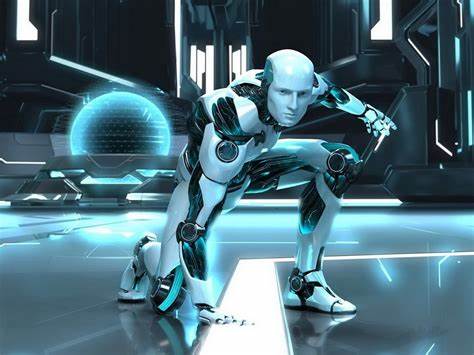
Robotics is making waves across various sectors, and its influence is only set to grow. As we move further into 2024, it’s clear that robotics is not just a futuristic concept but a present-day reality reshaping industries and everyday life. In this blog post, we’ll explore the current trends in robotics, how they address pressing problems, and the solutions they offer, all while keeping the tone engaging and grounded in real-world data.
The Problem: Industry Inefficiencies and Workforce Challenges
In many industries, inefficiencies and labor shortages have become significant hurdles. For instance, manufacturing plants often struggle with production bottlenecks and quality control issues. According to a 2023 report by McKinsey & Company, over 60% of manufacturers are facing challenges due to labor shortages and rising operational costs. This is exacerbated by the need for high precision and speed in production processes, which human labor alone struggles to maintain consistently.
Similarly, in healthcare, the demand for medical services is increasing, but the supply of skilled professionals isn’t keeping pace. The World Health Organization (WHO) projects a global shortage of 18 million healthcare workers by 2030, creating a significant gap in patient care and medical services.
Agitation: The Impact of Inefficiencies and Shortages
The consequences of these inefficiencies and shortages are far-reaching. In manufacturing, delays and quality issues can lead to increased costs and reduced competitiveness. A 2024 study by Deloitte highlights that manufacturers with high automation levels reported up to 30% lower operational costs compared to those with minimal automation.
In healthcare, the shortage of workers leads to overburdened staff and longer wait times for patients. The American Hospital Association (AHA) notes that hospitals are experiencing increased patient load while struggling to maintain staff levels, affecting the quality of care and patient outcomes.
The Solution: How Robotics is Revolutionizing Industries
Enter robotics—an emerging solution that’s addressing these issues head-on. Let’s break down how robotics is making a difference across key sectors.
- Manufacturing Automation
Robotic systems are transforming manufacturing by automating repetitive and high-precision tasks. For instance, companies like FANUC and KUKA have developed industrial robots that perform tasks ranging from welding to assembly with remarkable efficiency. According to the International Federation of Robotics (IFR), the number of industrial robots in use globally increased by 15% in 2023, reflecting their growing adoption.
A notable example is Tesla’s use of robotics in its Gigafactories. Tesla’s robots handle complex tasks such as assembling battery packs and welding car bodies, significantly speeding up production while maintaining high quality. As a result, Tesla has been able to meet its production targets more effectively and reduce costs.
- Healthcare Robotics
In healthcare, robotics are alleviating the burden on medical professionals and improving patient outcomes. Surgical robots, like the da Vinci Surgical System, enable surgeons to perform minimally invasive procedures with greater precision. A 2023 study published in JAMA Surgery found that robotic-assisted surgeries resulted in 20% fewer complications and 15% shorter hospital stays compared to traditional methods.
Additionally, robots like the Robotic Rehabilitation System (RRS) are helping patients recover from strokes and other injuries. These systems provide consistent and tailored rehabilitation exercises, which are crucial for recovery. The National Institutes of Health (NIH) reports that patients using robotic rehabilitation devices show up to 25% better functional recovery compared to those undergoing traditional therapy alone.
- Service Robots
Service robots are increasingly becoming a part of everyday life, providing convenience and efficiency. Robotic vacuum cleaners, such as those made by iRobot, have gained widespread popularity for their ability to clean floors autonomously, saving users time and effort. The global market for robotic vacuum cleaners grew by 12% in 2023, reflecting their increasing acceptance.
In the hospitality sector, robots are being used for tasks such as delivering room service and providing information. For example, the Henn-na Hotel in Japan employs robots for check-in, concierge services, and room cleaning. This approach not only enhances operational efficiency but also offers a novel guest experience.
- Autonomous Vehicles
Autonomous vehicles, including self-driving cars and delivery drones, are pushing the boundaries of robotics. Companies like Waymo and Tesla are leading the charge in developing self-driving technology. According to a 2024 report by the Department of Transportation, autonomous vehicles could reduce traffic accidents by up to 90% by eliminating human error.
Delivery drones are also making headlines for their potential to revolutionize logistics. Companies like Amazon are testing drone deliveries to improve delivery speed and efficiency. Early pilot programs have demonstrated that drones can reduce delivery times by up to 50%, offering a promising solution to last-mile delivery challenges.
Conclusion: Embracing the Robotics Revolution
Robotics is not just a trend; it’s a transformative force reshaping industries and improving lives. From manufacturing and healthcare to everyday tasks and transportation, robots are addressing critical challenges and providing innovative solutions. As the technology continues to advance, we can expect even more profound changes and benefits.
The rise of robotics is a testament to human ingenuity and the drive to overcome obstacles. By embracing these advancements, businesses and individuals alike can stay ahead of the curve and harness the full potential of this exciting field. As we move forward, keeping an eye on these trends will be essential for understanding how robotics will continue to shape our world.
Feel free to dive deeper into specific areas of robotics or share your thoughts on how you see this technology impacting your industry or daily life!